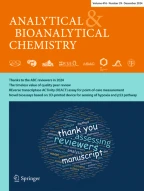Abstract
A model for sensing with semiconducting metal oxide (SMOX)-based gas sensors was developed which takes the effect of the shape of the grains in the sensing layers into account. Its validity is limited to materials in which the grains of the SMOX sensing layer are large enough to have an undepleted bulk region (large grains). This means that in all experimental conditions, the SMOX properties ensure that the influence of surface phenomena is not extended to the whole grain. The model takes the surface chemistry and its impact on the electrical properties of the sensing material into consideration. In this way, it relates the sensor signal—defined as the relative change of the sensor’s conductance—directly to the concentration of the target gas and also exhibits meaningful chemical parameters, such as the type of reactive oxygen species, the reaction constants, and the concentration of adsorption sites. The validity of the model is confirmed experimentally by applying it to data gathered by measuring homemade sensors in relevant conditions.





Similar content being viewed by others
References
Williams DE (1999) Semiconducting oxides as gas-sensitive resistors. Sensors Actuators B Chem 57:1–16
Afzal A, Cioffi N, Sabbatini L, Torsi L (2012) NOx sensors based on semiconducting metal oxide nanostructures: progress and perspectives. Sensors Actuators B Chem 171–172:25–42
Fine GF, Cavanagh LM, Afonja A, Binions R (2010) Metal oxide semi-conductor gas sensors in environmental monitoring. Sensors (Basel) 10:5469–5502
Bârsan N, Weimar U (2001) Conduction model of metal oxide gas sensors. J Electroceram 7:143–167
Rothschild A, Komem Y (2004) The effect of grain size on the sensitivity of nanocrystalline metal-oxide gas sensors. J Appl Phys 95:6374
Yamazoe N, Shimanoe K (2008) Roles of shape and size of component crystals in semiconductor gas sensors I. Response to oxygen. J Electrochem Soc 155:85–91
Yamazoe N, Shimanoe K (2008) Roles of shape and size of component crystals in semiconductor gas sensors II. Response to NO2 and H2. J Electrochem Soc 155:93–98
Fort A, Mugnaini M, Rocchi S et al (2010) Metal-oxide nanowire sensors for CO detection: characterization and modeling. Sensors Actuators B Chem 148:283–291
Korotcenkov G (2005) Gas response control through structural and chemical modification of metal oxide films: state of the art and approaches. Sensors Actuators B Chem 107:209–232
Morrison SR (1977) The chemical physics of surfaces. Plenum, New York
Bârsan N, Hübner M, Weimar U (2011) Conduction mechanisms in SnO2 based polycrystalline thick film gas sensors exposed to CO and H2 in different oxygen backgrounds. Sensors Actuators B Chem 157:510–517
Bârsan N, Schweizer-Berberich M, Göpel W (1999) Fundamental and practical aspects in the design of nanoscaled SnO2 gas sensors: a status report. Fresenius J Anal Chem 365:287–304
Hübner M, Bârsan N, Weimar U (2012) Influences of Al, Pd and Pt additives on the conduction mechanism as well as the surface and bulk properties of SnO2 based polycrystalline thick film gas sensors. Sensors Actuators B Chem 171–172:172–180
Hübner M, Pavelko RG, Bârsan N, Weimar U (2011) Influence of oxygen backgrounds on hydrogen sensing with SnO2 nanomaterials. Sensors Actuators B Chem 154:264–269
Diéguez A, Romano-Rodríguez A, Morante JR et al (1999) Nanoparticle engineering for gas sensor optimisation: improved sol–gel fabricated nanocrystalline SnO2 thick film gas sensor for NO2 detection by calcination, catalytic metal introduction and grinding treatments. Sensors Actuators B Chem 60:125–137
Diéguez A, Romano-Rodríguez A, Alay JL et al (2000) Parameter optimisation in SnO2 gas sensors for NO2 detection with low cross-sensitivity to CO: sol–gel preparation, film preparation, powder calcination, doping and grinding. Sensors Actuators B Chem 65:166–168
Author information
Authors and Affiliations
Corresponding author
Additional information
Published in the topical collection Chemosensors and Chemoreception with guest editors Jong-Heun Lee and Hyung-Gi Byun.
Rights and permissions
About this article
Cite this article
Rebholz, J., Bonanati, P., Weimar, U. et al. Grain shape influence on semiconducting metal oxide based gas sensor performance: modeling versus experiment. Anal Bioanal Chem 406, 3977–3983 (2014). https://doi.org/10.1007/s00216-013-7502-0
Received:
Revised:
Accepted:
Published:
Issue Date:
DOI: https://doi.org/10.1007/s00216-013-7502-0
